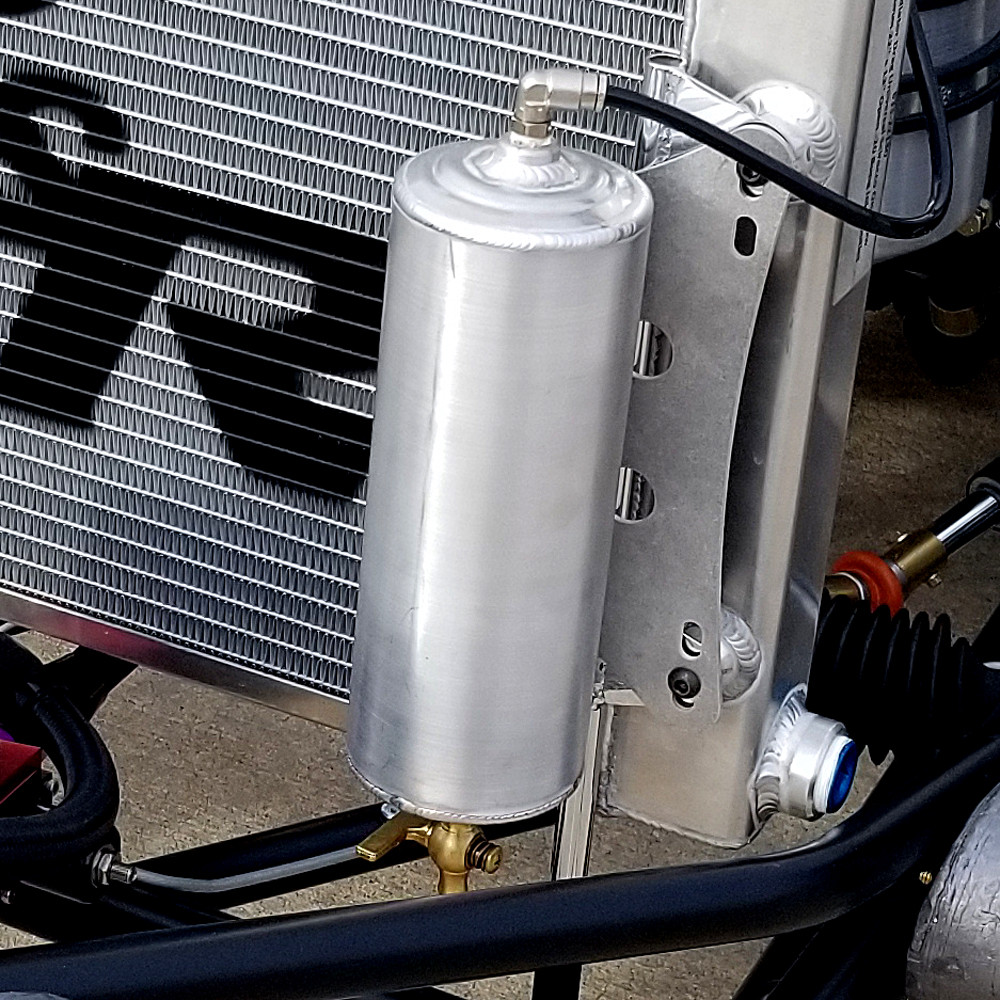


Allow time for the thermostat to open and for the engine to burp any stray air pockets. Start your engine with the radiator cap removed and coolant one inch below the neck. Coolant can rise as much as one inch as the engine warms up. When you are servicing a cold engine, you should add coolant to one inch below the filler neck which allows for expansion as the engine warms. We’ve seen a lot of people either under-service or over-service coolant. If you’re servicing a system with traces of ethylene glycol and water, the Evans Coolant Conversion Kitis the best way to get started. Begin your Evans regiment with new hoses and cooling system components and a system that is bone dry. You run 100-percent of it in your vehicle’s cooling system. This is the last coolant you will ever have to buy because it is permanent. Summit Racing offers you another coolant option known as Evans High Performance waterless coolant. If you’re going to run an ethylene glycol and water mix, it is suggested you run distilled water to keep minerals out of your cooling system. If you opt for the 50/50 mix, you can buy antifreeze already mixed with water for the sake of convenience. His logic is coolant temperature runs only marginally higher and this approach eliminates any risk of corrosion. Mark Jeffrey of Trans Am Racing in Southern California tells us he runs 100-percent ethylene glycol and no water without consequence and has been doing it for many years. If you’re expecting temperatures colder than that, you need a block heater or a warm garage. Also, use a coolant enhancer like Water Wetter, which improves surface tension and heat conductivity.Ĭoolant manufacturers often suggest a 50/50 mix of ethylene glycol and water, which will protect your cooling system down to -34F. If you are using straight water, you should always add water pump lubricant and a corrosion inhibitor. This is true in terms of heat conduction however, it is also the best source of corrosion. Water is the Best CoolantĪnother myth is that water is the best coolant. If you’re experiencing overheating with a 180, you have deeper problems with other components. Late-model computer-controlled vehicles mandate the use of a 192- to 195-degree F thermostat.

The best thermostat for classic vehicle applications today is the 180-degree thermostat. Although enthusiasts tend to choose a 160-degree F thermostat to treat overheating issues, the 160-degree thermostatwas originally intended for alcohol antifreeze back in the day. Thermostat selection boils down to application. Never operate your engine without a thermostat! And even on the open road, coolant never has a chance to park in the radiator long enough to give up heat energy to the atmosphere. This will only add insult to injury! When coolant never has a chance to give up heat via the radiator, it gets hotter and hotter, especially if you’re stuck in traffic. One of the greatest - or perhaps worst - cooling system myths is that you can remove your thermostat to eliminate overheating. Typically, when engines overheat or run too cool, it’s because of these cooling systems myths and misconceptions. Here are some of the more common myths and mistakes and why you should avoid them. It must also have the appropriate water pump speed and coolant flow between the engine and radiator. To achieve and maintain optimum temperature range, a good cooling systemneeds the right-sized radiator and fan combo. That means keeping the engine in the 180- to 210-degree F range. It needs to extract enough heat to keep your engine happy, yet maintain enough heat to keep it operating efficiently. There are many myths and misconceptions about engine cooling, but the truth is your engine’s cooling system must perform a balancing act.


 0 kommentar(er)
0 kommentar(er)
